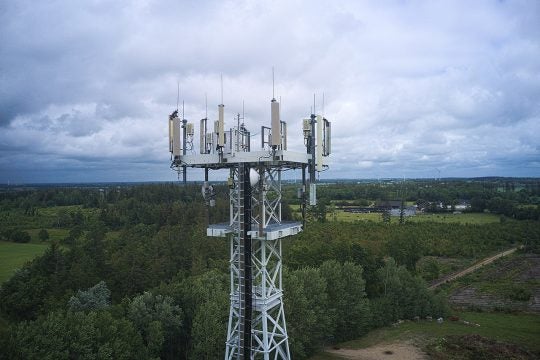Summary
The first leaders level summit of the Quad on 24 September 2021 set a clear pathway and the focus areas for the grouping. The summit itself builds on the work being done by the member states bilaterally and trilaterally in their evolving competition with China. The summit, however, also placed technology governance as an issue between the competing liberal and authoritarian global orders.
At the first-ever Quad leaders’ summit on 24 September 2021 in Washington DC, several technology and cyber initiatives were announced. Specific focus areas for the Quad included semiconductor supply chains, 5G technology and cyber-security. Discussions set clear pathways and focus areas for the grouping in its evolving competition with China. Several strategic considerations that are driving these four Indo-Pacific democracies – the United States (US), Australia, Japan and India – to cooperate include the need to solidify diplomatic commitments to a regional order in flux, mitigate the effects of ongoing technological disruptions and manage the impacts left by COVID-19 that will linger. Technology has emerged as a key plank that affects all other issues – security, growth, climate change and health for the Quad.
On semiconductors, the Joe Biden administration has been concerned that Chinese investments in Western semiconductor companies may allow them to forcibly transfer this technology to China. Hence, it has placed a significant emphasis on semiconductor supply chain security; the summit also reaffirmed the need to protect supply chains and launched an initiative that looks to “to map capacity, identify vulnerabilities, and bolster supply-chain security for semiconductors and their vital components.”
In telecommunications, 5G reared again. The Quad leaders stressed the need to keep future 5G telecommunications ecosystems “diverse, resilient, and secure”. The rapid growth of Chinese telecommunication companies and China’s increasing influence in international standards organisations has precipitated fears of rising digital authoritarianism. To this end, the Quad reaffirmed support for Open Radio Access Networks (RAN) technology for 5G deployment and cooperation with multilateral standardisation organisations like the International Telecommunication Union. The Quad also institutionalised a Quad Senior Cyber Group which focusses on “adoption and implementation of shared cyber standards; development of secure software; building workforce and talent; and promoting the scalability and cybersecurity of secure and trustworthy digital infrastructure.”
Cybersecurity featured on the agenda as well. Building on previous talks, the Quad leaders agreed to further strengthen existing and launch new efforts to bolster critical cyber infrastructures against rising cyber threats. Cyber threats are worsening and so are their effects. Between 2019 and 2020, ransomware attacks increased by 62 per cent worldwide, and 158 per cent in North America. These attacks are persisting because more firms are opting to pay the ransom to retrieve their data, which is incentivising cybercriminals. Details to address this problem, however, were not too clear in the culminating Quad joint statement. Promises were made to deepen discussions on cyber standards, develop secure software that can be shared, invest in building a workforce that is cyber resilient and enhance citizen trust in digital infrastructures over the long term. The agenda is deep.
It is also important to remember that though the Quad discussions and pledges on technology are an important component of the US’ Indo-Pacific strategy, they represent a broader diplomatic strategy to rewrite the international technology order. All these focus areas have been on the Biden administration’s agenda for some time. Biden initiated a supply chain review focussed on semiconductor supply chains, among other economic sectors. He also highlighted the need to protect semiconductor supply chains and carry out rigorous investment screenings in his meetings with Korean and Japanese officials. Furthermore, during both meetings, the US committed to develop Open RAN technological solutions for 5G telecommunication networks.
The Quad is not the only forum discussing critical technologies and other actors like the European Union, South Korea, Singapore and the Association of Southeast Asian Nations should be involved. Indeed, the economic future of all countries across the Indo-Pacific will be determined by their technological acumen and capacity to leverage cutting edge-technologies like artificial intelligence, quantum computing, bio and space technologies for mutual benefit. Challenges, however, also exist. Deepening technological cooperation within the Quad and between the Quad countries and other partners will involve overcoming differences in technology governance and regulation, digital trade barriers and ensuring that competition policies foster innovation for all firms, not just the few.
Undeniably, China looms large over the Quad’s technology agenda. The ‘Quad Principles on Technology Design, Development, Governance, and Use’ states, “[T]he ways in which technology is designed, developed, governed, and used should be shaped by our shared democratic values and respect for universal human rights.” Technology issues have been at the centre of growing competition between the US and China. Importantly, the summit also placed technology as the centre of a broader effort to frame the ongoing geopolitical tensions over technology governance as one of values, that is how technology is and can be deployed for liberal and illiberal ends. The Indo-Pacific countries that can lead the development and deployment of critical and emerging technologies will improve their ability to secure their interests consistent with their values. All Quad countries have a vital stake when it comes to technology cooperation given their converging interests.
. . . . .
Dr Karthik Nachiappan is a Research Fellow at the Institute of South Asian Studies (ISAS), an autonomous research institute at the National University of Singapore (NUS). He can be contacted at isaskn@nus.edu.sg. Mr Nishant Rajeev is a Research Analyst at the same institute. He can be contacted at isasnr@nus.edu.sg. The authors bear full responsibility for the facts cited and opinions expressed in this paper.
Photo credit: Wikimedia Commons
-
 More From :
More From :
-
 Tags :
Tags :
-
 Download PDF
Download PDF



